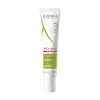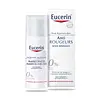What's inside
What's inside
 Key Ingredients
Key Ingredients

No key ingredients
 Benefits
Benefits

 Concerns
Concerns

No concerns
 Ingredients Side-by-side
Ingredients Side-by-side

Water
Skin ConditioningGlycerin
HumectantDicaprylyl Carbonate
EmollientPentylene Glycol
Skin ConditioningC14-22 Alcohols
Emulsion StabilisingHelianthus Annuus Seed Oil
EmollientBehenyl Alcohol
EmollientCitrus Aurantium Dulcis Fruit Water
MaskingSodium Stearoyl Glutamate
CleansingAloe Barbadensis Leaf Juice Powder
Skin ConditioningAvena Sativa Flower/Leaf/Stem Juice
Skin ConditioningC12-20 Alkyl Glucoside
EmulsifyingCitric Acid
BufferingCola Nitida Seed Extract
Skin ConditioningGlyceryl Caprylate
EmollientSclerotium Gum
Emulsion StabilisingSodium Benzoate
MaskingTaraxacum Officinale Rhizome/Root Extract
Skin ConditioningTocopherol
AntioxidantXanthan Gum
EmulsifyingWater, Glycerin, Dicaprylyl Carbonate, Pentylene Glycol, C14-22 Alcohols, Helianthus Annuus Seed Oil, Behenyl Alcohol, Citrus Aurantium Dulcis Fruit Water, Sodium Stearoyl Glutamate, Aloe Barbadensis Leaf Juice Powder, Avena Sativa Flower/Leaf/Stem Juice, C12-20 Alkyl Glucoside, Citric Acid, Cola Nitida Seed Extract, Glyceryl Caprylate, Sclerotium Gum, Sodium Benzoate, Taraxacum Officinale Rhizome/Root Extract, Tocopherol, Xanthan Gum
Ingredients Explained
These ingredients are found in both products.
Ingredients higher up in an ingredient list are typically present in a larger amount.
Glycerin is already naturally found in your skin. It helps moisturize and protect your skin.
A study from 2016 found glycerin to be more effective as a humectant than AHAs and hyaluronic acid.
As a humectant, it helps the skin stay hydrated by pulling moisture to your skin. The low molecular weight of glycerin allows it to pull moisture into the deeper layers of your skin.
Hydrated skin improves your skin barrier; Your skin barrier helps protect against irritants and bacteria.
Glycerin has also been found to have antimicrobial and antiviral properties. Due to these properties, glycerin is often used in wound and burn treatments.
In cosmetics, glycerin is usually derived from plants such as soybean or palm. However, it can also be sourced from animals, such as tallow or animal fat.
This ingredient is organic, colorless, odorless, and non-toxic.
Glycerin is the name for this ingredient in American English. British English uses Glycerol/Glycerine.
Learn more about GlycerinPentylene glycol is typically used within a product to thicken it. It also adds a smooth, soft, and moisturizing feel to the product. It is naturally found in plants such as sugar beets.
The hydrophilic trait of Pentylene Glycol makes it a humectant. As a humectant, Pentylene Glycol helps draw moisture from the air to your skin. This can help keep your skin hydrated.
This property also makes Pentylene Glycol a great texture enhancer. It can also help thicken or stabilize a product.
Pentylene Glycol also acts as a mild preservative and helps to keep a product microbe-free.
Some people may experience mild eye and skin irritation from Pentylene Glycol. We always recommend speaking with a professional about using this ingredient in your routine.
Pentylene Glycol has a low molecular weight and is part of the 1,2-glycol family.
Learn more about Pentylene Glycol